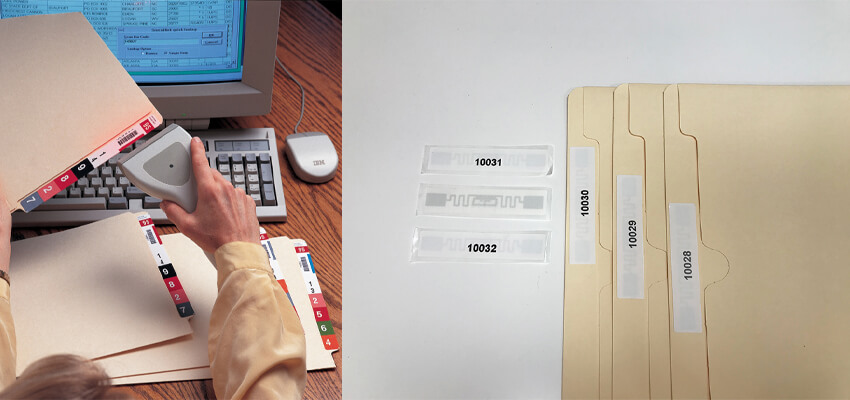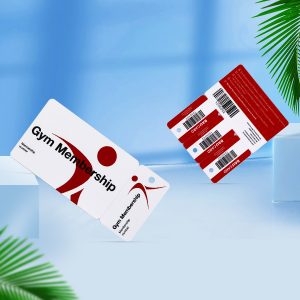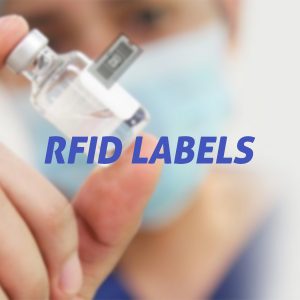For years, the primary purpose of RFID was to track and manage inventory. But with the increased popularity and demand for RFID technology, it has been adapted for other uses. One such use is tracking documents in an office or warehouse setting.

What Type of RFID is Recommended for File Tracking?
The type of RFID to use depends on your application. Generally, there are four types of RFIDs: UHF (Ultra High Frequency) ISO15693, ISO14443A and B. There are also other types that are not used for file tracking.
We recommend using a UHF tag for your file tracking because it has a range of approximately 30 feet, which is more than enough to track files through your warehouse or office building.
How Does File Management / Tracking with RFID Work?
RFID tags are attached to the files and documents, and then placed on the shelves. An RFID reader is installed near each shelf so that when a tag passes by it, it will pick up the data from the tag and report back to a server or database.
The reader can be a handheld device or fixed on a wall for quick scanning of multiple items at once. There are also readers that are battery powered so they can be used in places with no power supply (for example, in an earthquake relief camp).
Within What Range Can You Find a Specific Tagged Document?
The range at which you can find a specific tagged document will depend on the type of tag used and the reader. Most tags have a read range of up to 10 meters (33 feet), but many systems offer longer ranges. If you need to keep track of documents that are being moved across large distances, you’re probably going to want a longer read range than if your documents are in close proximity or not moving around too much. Either way, there is no “right” answer as far as how far apart your readers should be — it all depends on what makes sense for your business needs.
As with all RFID systems, longer read ranges come at higher costs; however, some systems offer flexible pricing options so that you can choose the right setup for your needs without breaking the bank!
Components of RFID System for File Management
In order to make a fully-functional RFID file management system, you need the following components:
- RFID reader. This is the device that reads the tags and sends the data to the computer or laptop.
- RFID tag. The tag contains information such as document number and title of the document in question.
- RFID antenna. An antenna makes it possible for a reader to detect and read an RFID tag even if it’s not in direct line-of-sight with the reader itself, so long as they’re located within range of each other—usually around 30 feet (10 meters).
- PC or laptop running software that can handle reading data from all tags into one database file on your computer hard drive so you can access it later by using Microsoft Office applications like Word or Excel.
It’s important to note that the key benefits of RFID file management are convenience and efficiency. You’ll be able to find documents at any time, even if they aren’t in their designated location (such as on a shelf). In addition, you won’t need any extra equipment for this type of system—just an RFID reader and tags attached to each folder or box being tracked.
Relevant articles
- RFID for Access Control Management You Would Like to Know
- The Ultimate Guide to Know RFID Asset Management
- RFID for Laundry: How it works? What the benefits?
- Deeply Dug: RFID for Tracking
- RFID Helps to Identify and Protect Motorcycles
- 9 Common Applications RFID in Hospitals
- How does RFID revolutionize manufacturing?







I appreciate you sharing this blog post. Thanks Again. Cool.